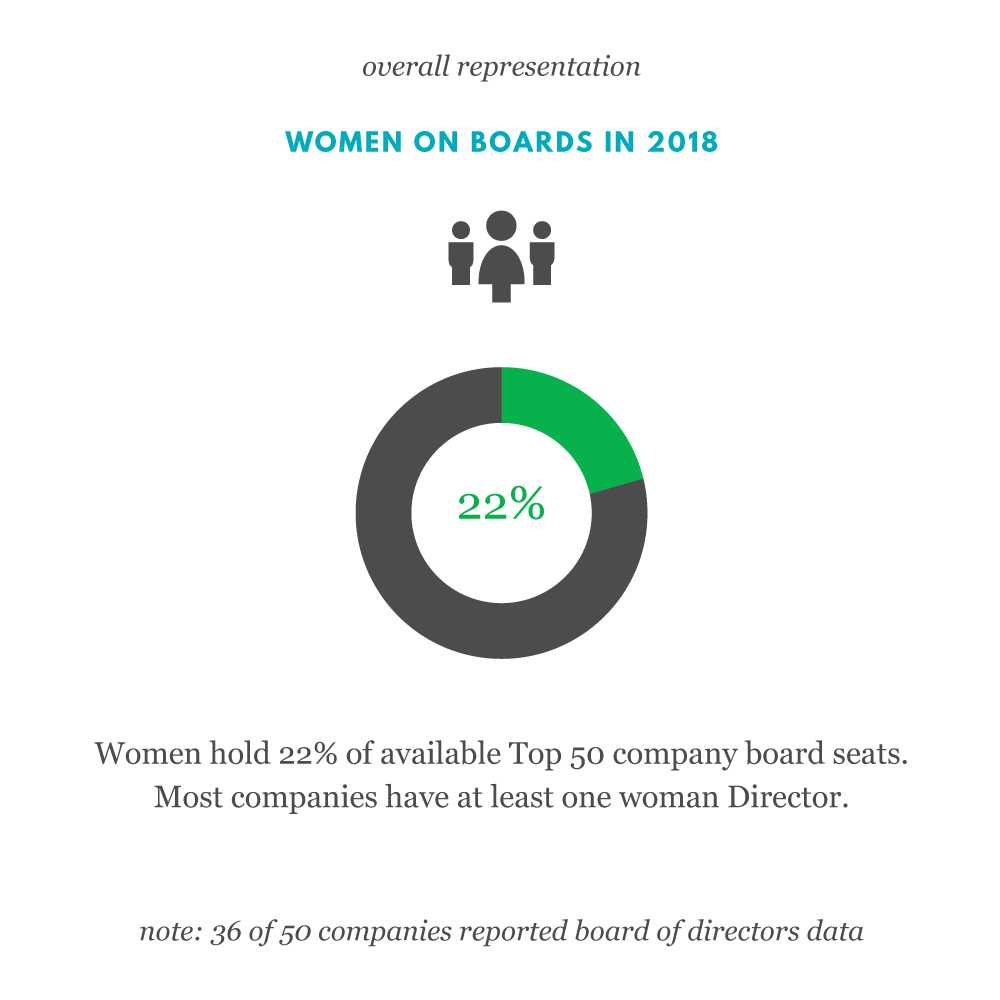We are pleased to announce the release of the 2018 Face of Leadership™ BC Scorecard, and inaugural edition of the Tech Scorecard.
For the second year, only 3/50 CEOs of BC’s top revenue-generating companies are female. This statistic contrasts women’s representation of 47% of BC’s total workforce, and the national trend of more Canadian women graduating from universities than men. Women are underrepresented at every step of the corporate ladder, steadily declining as they climb through the ranks.
“Minerva BC’s Score Card compiles information that is specific to the business community in British Columbia” says Tina Strehlke, CEO of Minerva BC. “These are the leading companies drive our economy. Understanding how they measure up is the first step to achieving more balanced leadership across all sectors.”
The Face of Leadership™ BC Score Card highlights the representation of women in leadership roles across the province’s 50 biggest revenue-generating companies, with support from presenting partner, Vancity. The BC Score Card in its fourth edition, with an additional Tech Score Card launched in 2018 to spotlight gender diversity in the province’s burgeoning IT sector. Both Score Cards indicate a disparity for women in leadership.
Across the ‘BC50’, there is a consistent trend for one or two women to hold executive leadership positions. Companies with three or more women in executive leadership are a clear exception, but rarely does percentage of women on the board of directors exceed 30%.
The financial sector is a clear leader in female representation, with a majority of the companies in the sample having more than 50% female board and executive leadership representation. The sectors that fared poorly were the industrial sector and real estate sector, neither of them presenting an average higher than 20% in either category.
Companies such as Lululemon Athletics, WorkSafe BC, MacDonald, Dettwiler & Associates, Pacific Blue Cross, BC Lottery Corporation, BC Ferry Corporation, and Fortis B.C. Energy, known for employing best practices in female empowerment, resulted in relatively high numbers of women in leadership positions.
“As a group, women leaders rely on our collective strength to support one another to increase gender equity,” says Tamara Vrooman, president and CEO of Vancity. “But it’s up to corporate leaders in every sector to empower women at the executive level—not just because it’s the right thing to do, but because it fosters greater innovation and boosts profitability.”
The Canadian workforce is at a significant crossroads with an aging population and falling fertility rate. With a smaller future workforce projected in the near future, Canada’s economic livelihood rests on its ability to employ all available talent.
The conversation of gender equality in the workplace has shifted beyond the lens of social justice, to economic necessity: A 2017 McKinsey Global Institute Report reports Canada could add a staggering $150 billion in incremental GDP within the next ten years if women can be further activated in the labour market, with BC highlighted to have the most potential growth. Canada currently has the world’s 7th largest gender wage gap in the world, highlighting women’s lack of economic opportunities, specifically in higher-paid leadership roles.





